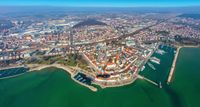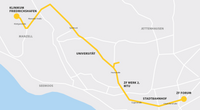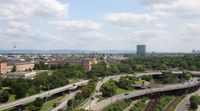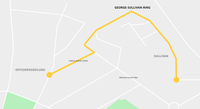The real laboratories
Real-world laboratories are used to gather experience with digital innovations under real-life conditions. Here, stakeholders from research, industry, municipalities and operators in urban and rural areas as well as for passenger and freight transportation can test new technologies and business models.
In order to be able to investigate as many different use cases and mobility services as possible, two real-world laboratories with different focal points are being implemented in RABus:
- Friedrichshafen: inner city and intercity operation
- Mannheim: development of a new residential district; simulation of driverless operation
Friedrichshafen
With just over 62,000 inhabitants, Friedrichshafen is a major economic and research center on Lake Constance. This makes the city predestined for a real-world laboratory for several reasons. Not only does ZF Friedrichshafen AG, a project partner, have its headquarters in the city, but the region is also highly attractive for tourists, with 350,000 guests and around 800,000 overnight stays in Friedrichshafen alone. The trade fair location with several large, international trade fairs also contributes to this. Several universities, including Zeppelin University and the DHBW, are located here. The road-based public transport system is already very well equipped with 18 city transport lines, six night bus lines and numerous regional transport lines. This mix makes Friedrichshafen the perfect real-world laboratory for researching various possible applications for automated driving.
In Friedrichshafen, the plan is to implement a regular service on fixed routes. In a first step, this includes purely inner-city applications and, in a second step, driving on interurban roads with shuttle buses. For this purpose, a shuttle speed in automated operation is planned that allows integration into the flow of traffic ("swimming along") in urban areas and on selected rural roads outside urban areas at a reduced maximum permitted speed. The automated vehicles are to be used in mixed traffic with all other means of transportation.
Mannheim
FRANKLIN, formerly the largest US army housing estate, is located in the north of Mannheim, around five kilometers from the city centre. Following the withdrawal of the American armed forces, the approximately 144-hectare site offers enormous urban development opportunities. Between 2015 and 2025, apartments for a total of 9,000 people, commercial facilities and around 50 hectares of parkland will be built. There is already a public transport connection along the site in the form of tram line 5. However, this service is not sufficient due to the size of FRANKLIN, so a comprehensive mobility concept was developed. Part of this new concept is the implementation of automated bus routes that connect remote areas of FRANKLIN to line 5.
As FRANKLIN is designed as a residential area, a permanent speed limit of max. 20 km/h will apply. The aim is to improve the attractiveness of the public transport system with the help of shuttle buses on the so-called first and last mile. The focus of this real-world laboratory is on the gradual implementation of driverless operation. To this end, the vehicles are to move with the flow of traffic.




/.BW100_GR_4C_MV.jpg/picture-200?_=17c4b370acc)
/.SDA.png/picture-200?_=1849fb87d1e)